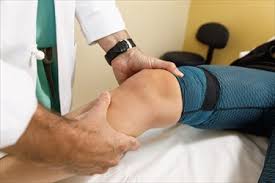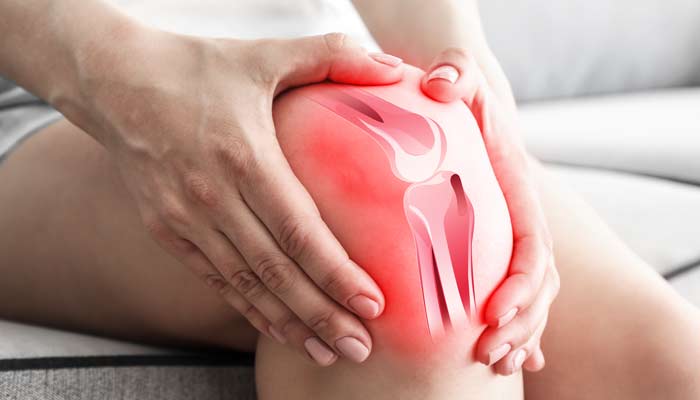 Physiotherapy is the Best Long-term Solution Physiotherapy is the Best Long-term Solution Knees are pivotal for balancing our entire body in a stable way and is a joint that causes problems/pain in most people, especially the female population. All of us experience knee problems sometime in life and most of these problems are due to everyday wear and tear, overuse or injury which happen mostly due to recreational activities, work-related tasks or home projects. In general, knee buckling is a problem that can strike anyone at any age. Knee Buckling Knee buckling is when one or both of your knees give away when you try to bear weight on your legs. Also called as knee instability or weak knees, it can be accompanied by pain, but this is not mandatory. Most individuals would have experienced this once or twice in life, but it could be due to some other reason, maybe you just tumbled over! When it does happen frequently, it becomes a case of serious concern. Know Your Knees Our knee is the largest joint in the body and this makes us even more responsible for safeguarding it nicely! But often our knees succumb to too much body weight due to obesity/overweight and give away. Staying on a healthy weight is essential to maintain overall health and it is high time to get in touch with an RDN at www.firsteatright.com to lose weight. The knee connects the thighs and the legs and consists of two joints. It also has 4 bones-the femur, tibia, fibula and patella-all of which are functional in the knee joint except the fibula. One knee joint (tibiofemoral joint) is present between the tibia and femora while the other joint (patellofemoral joint) is present between the femur and patella. The femur is the longest and strongest bone in the human body. The upper and lower bones of the knees are separated by two discs called menisci. These menisci consist of connective tissue with extensive collagen fiber containing cartilage-like cells. There are also tendons (these connect leg muscles to knee bones), ligaments (connect knee bones together) and muscles connecting the upper leg bone (femur) and the lower leg bones (tibia and fibula). Cartilages are elastic tissues that help the joints slide smoothly over each other and pave way for flexible knee movement. The bone surfaces inside the knee joint is covered by cartilage which ensure these functionalities (flexible movement and shock absorption). Causes While a knee problem is mostly due to an injury, there might also be other reasons such as job, sports and recreation activities, old age or the presence of diseases such as osteoporosis and arthritis that increase your probability of a knee injury. Most individuals too associate knee buckling with osteoarthritis but there is a study which disproves this! This study showed that more than 50% of the people complaining of knee buckling did not show any signs of arthritis in the X-rays. Knee consists of joints, tendons, ligaments, bones and muscles, each doing different functions to enable proper functioning of our knee joint. Damage to any of these parts or a combination of both, an injury and damage to any of these parts can cause knee buckling. Other important factors that contribute towards knee damage include:
Exercise is the main treatment offered for knee buckling. Specific exercises help to strengthen the leg muscles, improve knee stability and provide flexibility, all of which help to minimize/prevent knee buckling. A physical therapist devices certain sets of exercises depending on the person’s problem. While the therapy can be for anywhere from 1-4 weeks, patients are recommended to continue all exercise henceforth to prevent further pain and problems. Initially, the patients might find it difficult to follow these exercises, but slowly build up strength and flexibility in their legs and knees. Instead of doing this, some people start limiting their activities, reduce their walk timings, go out less-often and even stop doing physical activity which can lead to even more damage. Other treatment options include rest, compression, ultrasound, support in the form of braces, bandages and tapes, medications or surgery. Changing your lifestyle for the better such as losing excess weight, avoiding stairs and making use of lifts, ramps and escalators and making use of canes to assist walking can also help individuals go easy with knee buckling. It is better to meet a physician if you experience pain, swelling in the knees for more than a couple of days, walking difficulty, clicking sound with pain, fever or limitations in your routine activities along with knee buckling. Comments are closed.
|
AVOID FRAUD. EAT SMART.+91 7846 800 800
AuthorDietitian & Nutritionist Dr. Nafeesa Imteyaz. Archives
July 2024
Categories
All
Dr. Nafeesa's Blog @blogspot |
- Home
- Written Testimonials
- Consult
- Clinics
- Blogs
-
Diet & Nutrition
- Diabetes Reversal
- IVF IUI not needed for PCOS PCOD Infertility
-
Medical Nutrition
>
-
Disease & Conditions
>
- Infertility | PCOS
- Diabetes Mellitus
- Cholesterol
- Hypothyroid
- Kidney Problems
- Hypertension
- Cardiovascular Diseases
- Liver Diseases
- Gastro intestinal disorder
- Cancer
- Metabolic Disorders
- Orthopedic Disorders
- Eating Disorders
- Dietary Recall
- Weight Record Filled By Clients
- Online Payment Transaction Details
- Online Clients Weight Check Form
- Our Program Package Service Charges
- Weight Record 2017 Clients
- Measurements sent by Clients
- Terms & Conditions Of Payment
- Thanks. Your Form is Submitted
- Video Testimonials
- Lifestyle & Wellness
- Lifestyle & Wellness Blog
- Allergy & Intolerance
- Weight Loss / Gain
- Weight Loss / Slimming Blog
-
Disease & Conditions
>
- Life Cycle Nutrition >
- Sports Nutrition >
- Integrity in Nutrition
- Knowledge Centre
© COPYRIGHT 2022. ALL RIGHTS RESERVED. FRST HEALTHCARE PVT LTD.
Dr. Nafeesa Imteyaz of First Eat Right clinic, is the Best Dietitian Nutritionist in Bangalore. Best Dietitian Nutritionist in Pune. Best Dietitian Nutritionist in Hyderabad. Best Dietitian Nutritionist in Chennai. Best Dietitian Nutritionist in Mumbai. Best Dietitian Nutritionist in Delhi. Best Dietitian Nutritionist in Kolkata.


